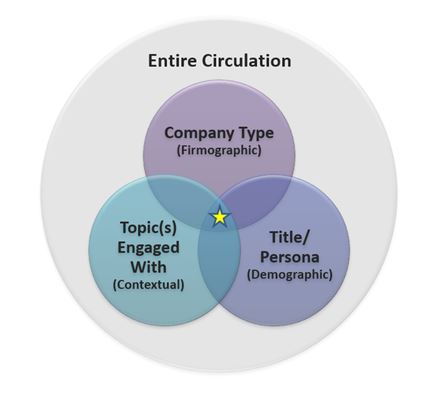Why There Isn't A "Media Kit" For Life Science Connect

We’re going to peel back the curtain of our Life Science Connect for a few hundred words. In doing so, it makes some agencies, marketers, and competitors cringe. Here it goes: we no longer produce a traditional "media kit."
To some, that’s like saying our football team runs its offense without a quarterback. But media kits are relics of the old-school B2B publishing model. B2B sales and marketing has changed drastically since our company was founded nearly 40 years ago. The way we produce and deliver information to our readers has changed too.
Media kits have been replaced by the data-driven, highly customized products, services, and content we produce for our increasingly sophisticated life science partners.
Media Kits Reflect Outdated Marketing Tactics
Media kits used to be great when buying magazine ads, website banner ads, and eblasts were the only ways companies could reach our audience. But companies are much more sophisticated now regarding who they want to reach, how they want to reach them, and what they want to reach them with.
Vanity marketing metrics like banner ad impressions and email open rates have been replaced with a need for more advanced buyer engagement data.
We need to have an in-depth conversation about your goals before discussing content creation, account-based marketing, custom newsletters, engagement analytics, market research, webinars, or brand awareness tactics. Packing all of that into a traditional “media kit” would result in dozens of pages with meaningless information that doesn’t speak to your growth goals.
That said, if you want to determine the CPL of a banner ad campaign, we do have a one-pager explaining general audience demographics and a rate card. But remember that demographic information isn’t nearly as important as engagement. Plus, we don't sell things like standalone display ads, one-off webinars, or a short series of eblasts. That's because we know those short bursts of marketing activity are not an effective way to engage your target audience.
Even if we did sell one-off marketing campaigns based on our circulation, that circulation information is constantly changing – that’s because we keep our subscription lists clean and current. We remove readers who have not engaged in any content within the last 18 months, and we add new readers daily who are engaging in content.
For example, one of our digital publications in the life sciences space had a newsletter circulation of 13,787 in one month earlier this year, which increased to 14,414, the following month, then decreased to 13,694 the month after that. The exact number – or even an average list size – isn’t what matters. Engagement with your content and with your brand is what really matters.
Engagement From Biopharma Readers Matters More Than Circulation Size
Determining engagement metrics – who among our readership fits your ideal target audience – cannot be explained by average circulation size. Are you targeting small companies or large ones? The C-suite or influencers? Do you have a global footprint, or are you focused only on the US?
The answers to those questions will determine how we can best help you reach your ideal buyer. When companies ask media partners for "circulation size," they are ignoring the fact that every reader within that circulation will not be a fit for their services.
Once we determine who among our audience is a fit, then we will look at their potential to engage with your content. We’ll start by pulling data to find prospects who are from the right company type/size and are the correct persona/title.
From there, we’ll look at who has interacted with content related to your services. Then we find out which readers are engaging with your competitors’ content if that’s applicable. And finally, we’ll filter interactions within a given time frame so you can see prospects who are actively engaged.

This reader engagement data is different for each company. Even your competitors won’t have precisely your same demographic, firmographic, and contextual filters. Since every ideal target audience is different, it doesn’t make sense for us to produce a media kit around a broad circulation.
Think of it this way: Your marketing dollars shouldn’t be wasted in the grey area of a broad circulation – instead, you should be actively reaching those gold-star target prospects.
Beware of media partners who only tout large circulation sizes, inflated open rates, or who can't explain how they manage and maintain their active subscriber lists.
The back-end data service that comes with our content programs is so unique in the life science industry that numbers or pie charts in a "media kit" cannot adequately compare us to other media companies. We’re not a one-size-fits-all marketing partner, just as no two companies have the same marketing strategy.
Customization & Understanding Replaces Media Kits
We realize it would be easier for agencies and marketing teams if we continued to create media kits. Truthfully, it would be easier for us, too, if we didn’t have to customize a strategy for every one of our partners.
But we want to treat our partners with the attention to detail you deserve. We strive to show our partners real-world intent data and behavioral analytics about readers who are a fit to choose them as trusted outsourcing partners. The way we deliver intelligence about our readers can’t be explained in a few pages about our circulation size, services, and rate card.
The only way we can explain how we help is by customizing our response to media kit requests. To do this, we first have to understand your goals. And by “goals,” we’re not just talking about a marketing team's "goal" to get as many leads as possible. We need to know specifics about the goals of your marketing team, sales team, and executive team. We want to know your one-year, five-year, ten-year growth plans and your long-term strategy. Only then can we know what to suggest and customize for you.
So yes, you can expect a request for a media kit to be met with follow-up questions and an invitation to chat with a member of our business development team. That’s because being successful in today’s sales and marketing environment is more challenging than what can be explained in a PDF. But it’s a challenge we’re eager and willing to tackle with you.
Originally published on Follow Your Buyer
Let's work together.
Whether you're ready to hit the ground running or just starting and have questions, we're here to understand your goals and explore how we can help you.